Table of contents
- Types of Farming Chart
- Type of Farming
- 1. Subsistence Farming
- 2. Commercial Farming
- 3. Plantation Farming
- 4. Mixed Farming
- 5. Organic Farming
- 6. Shifting Cultivation (Jhum Cultivation)
- 7. Intensive Farming
- 8. Extensive Farming
- 9. Dryland Farming
- 10. Wetland Farming
- 11. Terrace Farming
- 12. Hydroponics & Aquaponics (Soilless Farming)
- Conclusion
- Frequently Asked Questions (FAQs)
Farming is the backbone of many economies, especially in a country like India, where nearly 54% of the population depends on agriculture for livelihood. However, farming is not a one-size-fits-all activity. It varies depending on climate, geography, resources, technology, and objectives. In this article, we will break down the types of farming in a simple and easy-to-understand way, with a types of farming chart, examples, and business relevance in India.
Types of Farming Chart
Here’s a quick visual summary of the major types of farming:
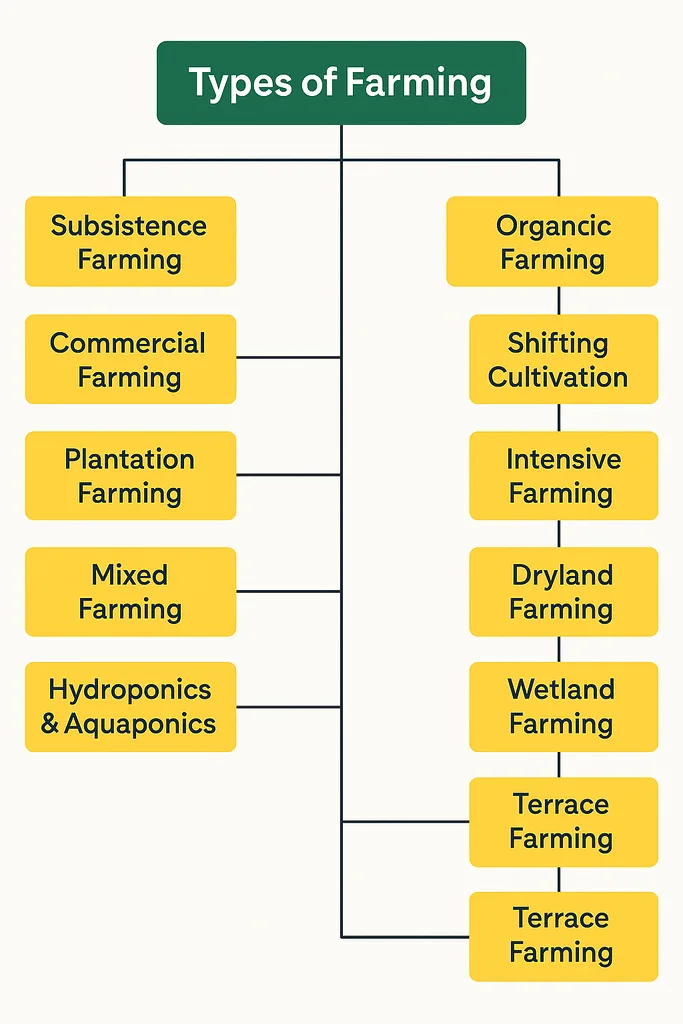
| Type of Farming | Meaning | Example (India) | Region |
| Subsistence Farming | Growing crops for personal/family use | Rice, wheat in Uttar Pradesh | Eastern & Northern India |
| Commercial Farming | Growing crops for sale in the market | Cotton, sugarcane in Maharashtra | Maharashtra, Punjab |
| Plantation Farming | Large-scale farming of a single crop for commercial sale | Tea in Assam, coffee in Karnataka | Assam, Kerala, Karnataka |
| Mixed Farming | Farming + Livestock (both crops and animals on the same farm) | Wheat + dairy in Haryana | Haryana, Punjab |
| Organic Farming | Rotating land use: farm on one patch, then move to another | Organic vegetables in Sikkim | Sikkim (first organic state) |
| Shifting Cultivation | Rotating land use; farm on one patch, then move to another | Slash and burn in North-East | North-Eastern States |
| Intensive Farming | High input, high output per hectare | Vegetables in peri-urban areas | Around urban centres |
| Extensive Farming | Low input, large land, lower yield per area | Paddy in sparsely populated areas | Rainfed rural belts |
| Dryland Farming | Farming in areas with little rainfall (<75 cm annually) | Jowar, bajra in Rajasthan | Rajasthan, Telangana |
| Wetland Farming | Farming in areas with heavy rainfall or irrigation | Rice in Kerala and West Bengal | Kerala, Bengal, Assam |
| Terrace Farming | Farming on hilly slopes using terraces | Rice in Uttarakhand | North-East, Hilly States |
| Aquaponics & Hydroponics | Soilless farming using water and nutrients (modern methods) | Lettuce, herbs in urban greenhouses | Urban India (Delhi NCR) |
Type of Farming
1. Subsistence Farming

This is the oldest and most traditional form of farming, where farmers grow food mainly to meet the needs of their own family. Surplus, if any, is sold in the local market.
Features:
- Small land holdings
- Manual tools like sickles, bullock ploughs
- Minimal or no use of chemical fertilizers or technology
Example in India: A small farmer in Bihar growing rice, pulses, and vegetables to feed his household.
Benefits:
- Low-cost, sustainable
- Promotes food security at family level
Challenges:
- Low productivity
- No surplus to generate income
- Vulnerable to climate change
2. Commercial Farming
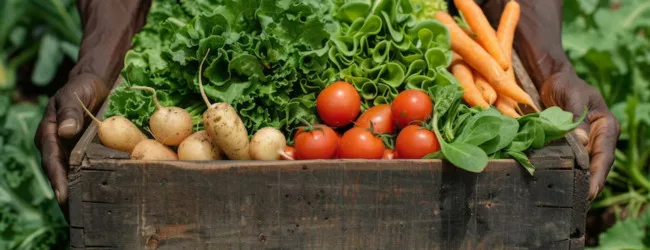
Farming with the aim of selling produce in markets for profit. This form uses advanced technologies, high-yielding seeds, chemical fertilisers, and modern irrigation.
Features:
- Large-scale land use
- Mechanized equipment
- Crop selection based on market demand
Example in India: Sugarcane and cotton cultivation in Maharashtra and Gujarat.
Benefits:
- High profits
- Supports agribusiness
Challenges:
- Expensive inputs
- Dependency on market fluctuations and middlemen
3. Plantation Farming
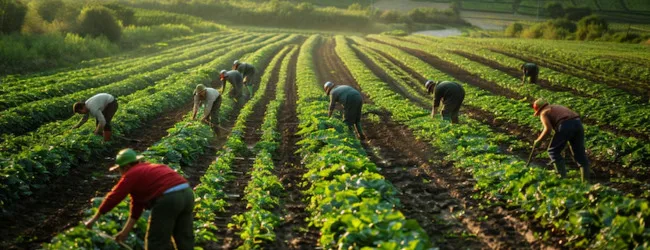
Definition: Plantation farming involves the cultivation of a single cash crop on a large estate, usually for export. It is capital-intensive and often company-owned.
Features:
- One crop grown extensively
- Requires skilled labour and high capital
- Long gestation period before profit
Example in India:
- Tea estates in Assam and Darjeeling
- Coffee plantations in Coorg (Karnataka)
Benefits:
- High export value
- Job creation in rural areas
Challenges:
- Monoculture is risky during price crashes
- Vulnerable to pests/diseases
💡 Pro Tip: If you want to start a farming business but have too many doubts, connect with a farming business expert from Boss Wallah for guidance – https://bw1.in/1116
4. Mixed Farming
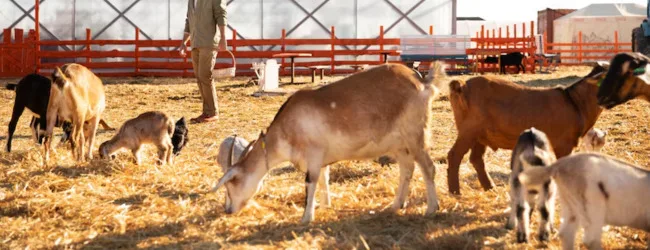
Definition: A system where farmers simultaneously grow crops and raise livestock. This ensures income throughout the year and better utilisation of land and resources.
Features:
- Crop and animal farming on the same land
- Cattle manure used as fertiliser
- Diversifies income streams
Example in India: Farmers in Punjab growing wheat and maintaining dairy cows for milk supply.
Benefits:
- Reduces dependency on one source of income
- Sustainable practice with efficient resource recycling
Challenges:
- Requires knowledge in both agriculture and animal husbandry
- Needs better infrastructure for animal care
5. Organic Farming

Definition: Farming method that avoids synthetic inputs such as chemical fertilisers, pesticides, and genetically modified organisms (GMOs). Focus is on natural growth processes.
Features:
- Use of compost, green manure, biological pest control
- Crop rotation for soil health
- Certification needed to sell as “organic”
Example in India:
- Sikkim became India’s first fully organic state
- Organic vegetable farming in Tamil Nadu and Himachal Pradesh
Benefits:
- Healthier food
- Environmentally sustainable
- Increasing market demand
Challenges:
- Lower initial yields
- Requires certification and time to build soil quality
6. Shifting Cultivation (Jhum Cultivation)

Definition: Traditional method where a patch of forest is cleared, cultivated for a few years, and then abandoned to let it regenerate.
Features:
- Slash-and-burn technique
- Short-term use, long-term soil degradation
- Practised in tribal belts
Example in India: Tribes in Nagaland and Mizoram practice Jhum cultivation
Benefits:
- Easy to practice in forested areas
- Suited to low-density population
Challenges:
- Not eco-friendly due to deforestation
- Soil fertility depletes quickly
- Not viable for large-scale food production
7. Intensive Farming
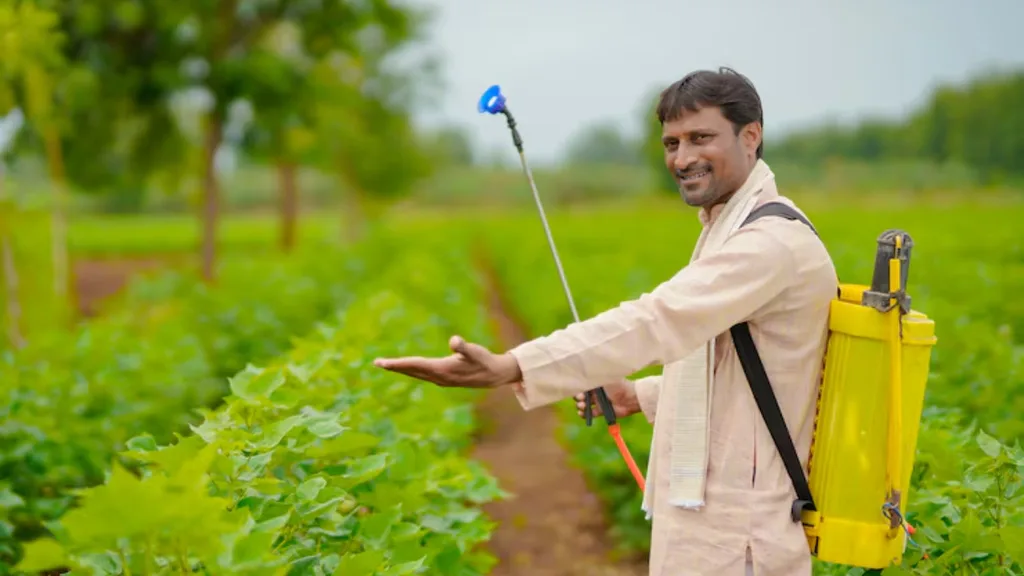
Definition: A farming method that involves high inputs (fertilizers, labor, capital) to get maximum yield from a small piece of land.
Features:
Focus on high productivity per hectare
Relies on irrigation and fertilisers
Suitable for high population density areas
Example in India: Vegetable cultivation around urban areas like Delhi-NCR and Mumbai
Benefits:
- Meets local demand
- High yield from small areas
Challenges:
- Can lead to soil degradation
- High cost of fertilisers and irrigation
8. Extensive Farming

Definition: Farming on a large area of land with lower input and lower output per hectare. Generally practised in areas with low population density.
Features:
- Large land holdings
- Less labor-intensive
- Usually rain-fed
Example in India: Groundnut and bajra cultivation in semi-arid areas of Rajasthan
Benefits:
- Cost-effective
- Minimal investment
Challenges:
- Lower productivity
- Vulnerable to droughts
9. Dryland Farming

Definition: Cultivation in arid and semi-arid regions where rainfall is less than 75 cm per year. Focus is on drought-resistant crops.
Features:
- Crops like jowar, bajra, and pulses
- No irrigation available
- Soil conservation methods used
Example in India: Farmers in Telangana, Andhra Pradesh, and western Rajasthan
Benefits:
- Makes use of otherwise unproductive land
- Helps ensure food in dry zones
Challenges:
Risky during long dry spells
Needs better access to technology and insurance
ALSO READ | Agricultural Equipments: 10 Must-Have Farming Tools in India
10. Wetland Farming

Definition: Cultivation in regions with high rainfall or waterlogging. The main crop is usually rice.
Features:
- Requires bunding, puddling, and transplanting
- Heavy use of manual labour
Example in India: Rice farming in West Bengal, Kerala, and Assam
Benefit: Ideal for high-yield rice varieties
Challenges:
- Labor-intensive
- Prone to flooding and waterborne diseases
11. Terrace Farming
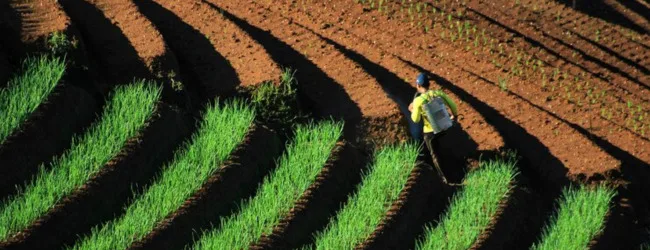
Definition: Step-like terraces are carved into hillsides to create flat land for farming. Prevents soil erosion and water runoff.
Features:
- Used in mountainous regions
- Excellent for paddy and vegetables
Example in India: Farmers in Uttarakhand and Himachal Pradesh
Benefits
- Maximises hilly land usage
- Conserves water
Challenges:
- High labour cost
- Infrastructure required
12. Hydroponics & Aquaponics (Soilless Farming)

Definition:
- Hydroponics: Growing plants in water with added nutrients.
- Aquaponics: A mix of hydroponics and aquaculture where fish waste is used to fertilise plants.
Features:
- Controlled environments
- Zero soil usage
- Mostly urban or peri-urban
Example in India: Urban farming startups in Bengaluru and Delhi growing lettuce, spinach, basil
Benefits:
- Ideal for limited space (e.g., rooftops)
- Saves 90% of water
- Pesticide-free
Challenges:
- Expensive setup
- Needs technical know-how
ALSO READ | What is Integrated Farming System (IFS)? A Complete Guide
Need Expert Guidance?
Starting a business can be challenging, but you don’t have to do it alone! At Boss Wallah, our 2,000+ business experts are ready to provide valuable insights and guidance. Whether you need help with marketing, finance, sourcing, or any other area of any business, our business experts are here to help you succeed- https://bw1.in/1116
Confused about Which Business to Start?
Want to start your own business but unsure which one to choose? Explore Boss Wallah, where you’ll find 500+ courses by successful business owners, featuring practical, step-by-step guides on starting and growing various businesses.
Find your perfect business idea today – https://bw1.in/1111
Conclusion
Farming in India is not limited to just ploughing the field and sowing seeds. It includes a variety of practices, each suited to different conditions and economic goals. Understanding the types of farming helps farmers, agribusiness entrepreneurs, students, and policymakers make better decisions.
Frequently Asked Questions (FAQs)
1. What are the main types of farming in India?
Subsistence, Commercial, Plantation, Mixed, Organic, Shifting, Intensive, Extensive, Dryland, Wetland, Terrace, and Modern (Hydroponics).
2. What is the most common type of farming in India?
Subsistence farming is the most widely practised.
3. What is organic farming and why is it important?
It’s a chemical-free method using natural inputs. It improves soil health and is in demand due to health-conscious consumers.
4. What is the difference between intensive and extensive farming?
Intensive: high input per area. Extensive: large area, low input.
5. What crops are grown in plantation farming?
Tea, coffee, rubber, sugarcane, spices.
6. Can I start hydroponic farming in India with low investment?
Yes, even ₹1-2 lakhs can start a small hydroponic unit. Government schemes and startups are supporting it.
7. What is the government doing to promote organic farming?
Schemes like PKVY (Paramparagat Krishi Vikas Yojana) support organic farming with subsidies.
8. How is climate change affecting Indian farming types?
It’s pushing farmers towards drought-resistant crops and climate-smart techniques like drip irrigation and organic farming.


